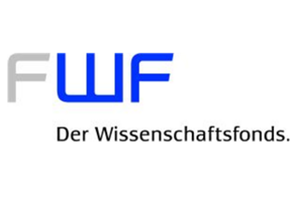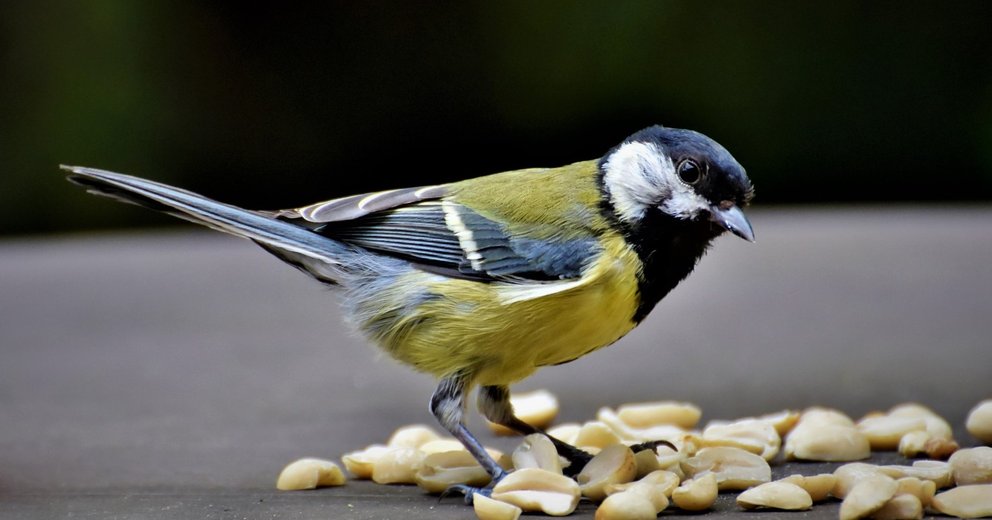
Evolutionary consequences of bird feeding
Background – Bird feeding, that is intentional feeding through the provision of food to free-living birds, is a widespread and extremely popular practice in urban areas throughout Europe. As such, it drastically alters the type, the quantity and the spatial and temporal distribution of food available for birds within urban landscapes. By modifying bird foraging behaviour, bird feeding is likely to have consequences for the evolution of birds in urban environments, especially by exerting selective pressures (e.g. on beak morphology, behaviour or lipid metabolism) and/or by shaping gene flow within the urban landscape. Although bird feeding may be a key driver of urban-linked phenotypic and genotypic changes observed in birds, we critically lack understanding on the role that bird feeding plays on the evolution of birds in urban environments.
Research questions – This project aims at answering two main questions: 1) How does bird feeding shape bird dispersal within urban mosaics? and 2) Is bird feeding responsible for divergent selection in birds within urban mosaics? Those questions are being addressed by measuring genetic connectivity and selection within an urbanized landscape.
Methods – We are measuring genetic connectivity and selection in two tit species, namely the great tit (Parus major) and the blue tit (Cyanistes caeruleus) within the city of Innsbruck (Austria) using state-of-the-art methods in landscape genetics and genomics and capture-recapture modelling .
Impact – In this project, we use a unique gold standard approach in urban ecology: by sampling two bird species, on their wintering and breeding grounds, and using a grid sampling design, we are accounting for the diversity of habitats within urban landscapes. Such sampling design will also allow us to use an individual-based landscape approach (rather than comparing phenotypes and/or genotypes between discrete populations).
People involved – Marion Chatelain (PI - University of Innsbruck), Andrew Shirk (University of Washington, USA), Johannes Rüdisser (University of Innsbruck), Sabrina Achhorner (master's student at the University of Innsbruck)
Project updates

Congratulations to Laure and Nora!
Laure Chapillon and Nora Nardou successfully defended their master's theses at Rennes University and Sorbonne University, respectively. They studied the variation in bird respiration rate (as a measure of stress) and plumage coloration in response to bird feeding within Innsbruck's urban mosaic. Among other findings, they demonstrated that in winter, bird feeders in more urbanized areas are visited by the most dominant great tits, those with a large breast stripe. This finding suggests that when food availability is low, competition at bird feeders increases and select for dominant individuals.
1st of July 2024

The third sampling campain is over!
The field season wrapped up three weeks ago, and once more, it was a success! We studied 225 great tits and blue tits across 83 locations within Innsbruck's urban mosaic. Nearly 30% of these birds were familiar from previous springs or winters. A delightful anecdote: we caught a couple of blue tits that we had banded three years ago.
27th of June 2024
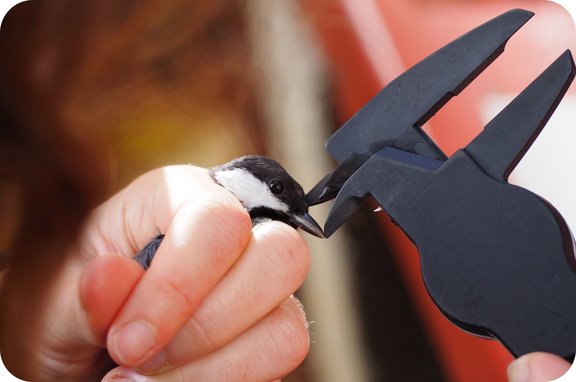
The second bird sampling campaign is now over!
The second sampling campaign has been exceptionally successful! We studied a total of 485 birds, including 12 birds previously ringed. One great tit was at least 4-year-old, which was a nice surprise considering that the typical lifespan of this species is 3 years!
22nd of January 2024
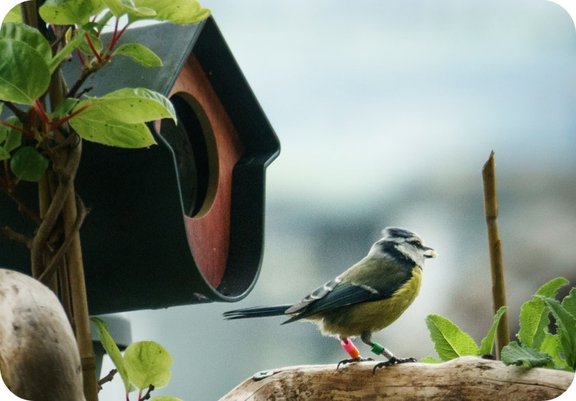
The second bird sampling campaign just started!
The second sampling campaign successfully started last Thursday: more than 50 birds were studied at just seven locations within Innsbruck. In the upcoming weeks 76 more locations will be visited. I am optimistic that numerous birds ringed during the previous spring will be encountered once more! I thank Eva Radenich for this fantastic picture of one of the blue tits ringed within this project!
6th of Novembre 2023
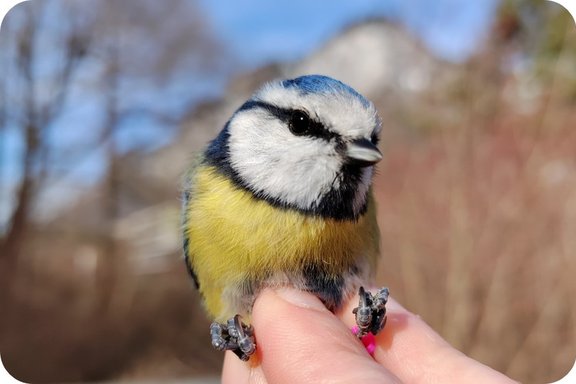
The first bird sampling campaign is over!
The first sampling campaign was a success: more than 300 great tits and blue tits have been ringed and measured. Five of them were old acquaintances from two years ago! The next campaign will start in November.
13th of June 2023
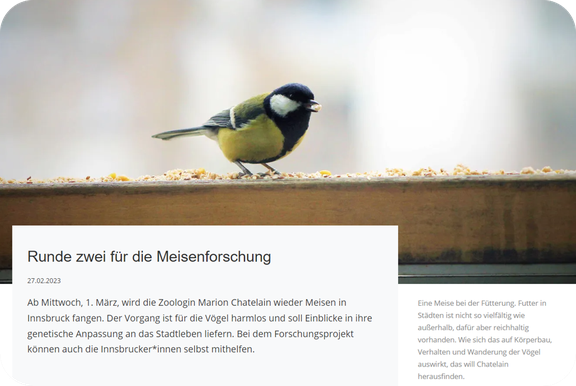
The project on the UIBK newsroom!
Interested in the project? You can read more on the UIBK newsroom (in German).
6th of March 2023
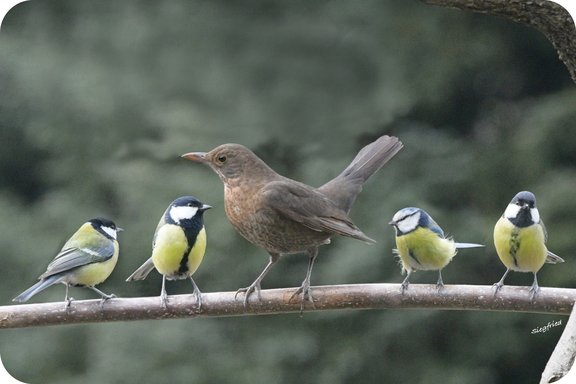
Thanks!
Thank you very much to all the people who sent me e-mails to show their interest in the project! Special thanks to Siegfried Tasser for this great picture of great tits, a blue tit and a blackbird waiting for food!
6th of March 2023
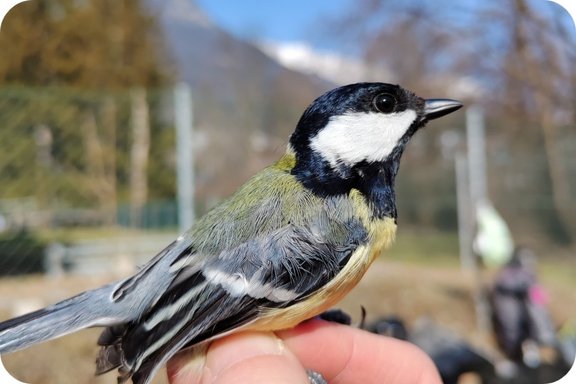
The fieldwork successfully started!
The fieldwork started on the 1st of March. In just to days, we studied 21 birds: 12 blue tits and 9 great tits. The spring sampling campaign will carry on until the end of May.
3rd of March 2023
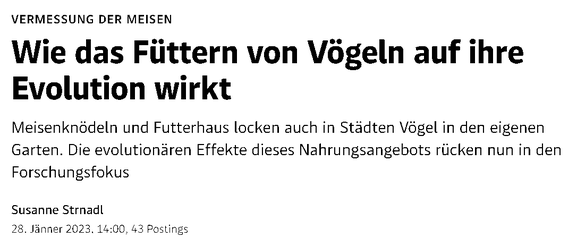
The project in the spotlight!
The fieldwork is expected to start in March. In the meantime, you can read more about the project in der Standard!
30th of January 2023
